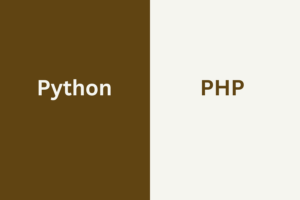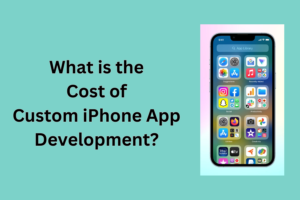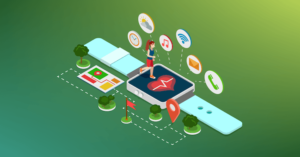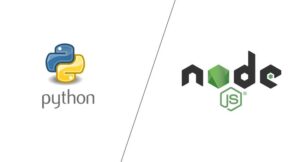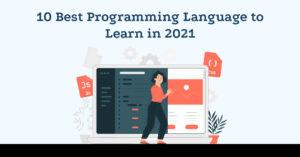A Beginner’s Guide to Python GUI Programming

Python is the most popular programming language among the developers around the world. One of the most engaging aspects is its ability to create Python GUI application, turning lines of code into intuitive and visually appealing user experiences.
Whether you are a newbie in programming or a seasoned developer exploring new horizons, delving into Python GUI programming can open doors to a world where your code comes to life through interactive interfaces.
Did you know that Python’s popularity as a programming language has soared dramatically in recent years?
It has consistently ranked among the top programming languages according to the TIOBE Index, largely owing to its simplicity, readability and extensive libraries.
With Python, you can easily transition from writing complex line programs to crafting GUI applications that cater to a broader audience.
Now the question is why should you consider venturing into the Python GUI programming?
Picture this creating desktop applications with sleek designs, responsive buttons and interactive elements that seamlessly interact with users. Whether you’re developing business tools, creative software or education apps. The Python GUI programming empowers you to encapsulate intricate functionality within an aesthetically pleasing wrapper.
With this being said, let’s discuss the essentials of GUI programming and explore popular GUI libraries like Tkinter and PyQt. Without further ado, let’s get started.
Why Python GUI Programming?
Let’s start with What is Python GUI Programming- Simply, graphical user interface is a digital interface in which a user interacts with graphical components like icons, menus and buttons.
In a GUI, visuals can be displayed in the UI which convey information relevant to the users and the action they can take.
Moreover, GUI has transformed the way we interact with computers making software more accessible and a widely used programming language has played a significant role in GUI application development.
You cannot imagine computers without GUIs. With this Let’s look at the journey of GUIs.
History of GUIs
The journey of GUIs dates back to the 1960s when researchers at XEROX PARC developed the first graphical user interface as a part of the Xerox Alto computer system.
With groundbreaking innovations introduces concepts like windows, icons, menus and pointing devices.
While in the 80s, Apple’s Macintosh and Microsoft Windows operating systems brought GUIs to mainstream computing. The Macintosh featured a rich visual interface, while Windows popularized the concept on IBM compatible PCs.
Python and GUI application development
While you create a gui application in python, it is the best idea. Python emerged as a powerful language for GUI development, with its simplicity and vast library tool.
The followinng are some notable milestones in Python’s GUI development industry.
- Tkinter
It’s a standard GUI library for Python, was created in the late 80s as a python interface of the Tcl/ Tk toolkit. It remains as a popular choice for beginners due to its simplicity and availability as part of the standard Python library.
- PyQt and Pyside
In the late 90s, PyQt and PySide emerged as wrappers around the Qt framework, providing powerful and feature rich GUI capabilities for Python programmers.PyQt is known for its flexibility, while Pyside offers a more permissive licensing model.
- Kivy
It was introduced in the early 2010, as an open source Python library for developing multitouch applications. It supports various platforms and encourages a natural user interface design.
Advantages and disadvantages of GUIs
| Advantages of GUIs | Disadvantages of GUIs |
| User-Friendly: GUIs are intuitive and user-friendly, allowing users to interact with software using visual elements like buttons, icons, and menus. | Learning Curve: GUIs can have a steeper learning curve for complex applications, requiring users to understand various interface elements and interactions. |
| Visual Representation: GUIs provide a visual representation of data and processes, making it easier for users to understand and manipulate information. | Resource-Intensive: GUI-based applications can be more resource-intensive compared to text-based interfaces, potentially requiring higher system requirements. |
| Rapid Interaction: GUIs allow users to interact with software quickly by clicking, dragging, and dropping, reducing the need for manual input. | Limited Automation: GUIs may not be as conducive to automation as command-line interfaces, which can hinder repetitive tasks or scripting. |
| Error Reduction: GUIs can minimize user errors by providing clear feedback, validation, and guidance during data input. | Less Scripting Control: GUIs may limit the level of scripting and customization compared to command-line interfaces, restricting advanced users’ capabilities. |
| Widespread Adoption: GUIs have become the standard interface for most applications, leading to widespread user familiarity and expectations. | Platform Dependency: GUIs can be platform-dependent, requiring adaptation for different operating systems and screen sizes. |
| Multitasking: GUIs enable multitasking by allowing users to work with multiple windows or applications simultaneously. | Slower Execution: Some GUI-based operations might be slower than equivalent command-line tasks due to the overhead of graphical rendering. |
| Accessibility: GUIs can be made accessible to users with disabilities through proper design, including features like text-to-speech and screen readers. | Version Compatibility: Changes in GUI libraries or frameworks can lead to version compatibility issues for older applications. |
| Visual Feedback: GUIs provide instant visual feedback on user actions, enhancing the user experience and reducing uncertainty. | Screen Real Estate: GUIs can consume significant screen real estate, especially in complex applications, potentially leading to cluttered interfaces. |
| Rich Interaction: GUIs support a wide range of interactive elements like charts, graphs, and multimedia, enhancing the presentation of information. | Complexity Management: Overly complex GUIs can overwhelm users and lead to cognitive overload, affecting usability. |
| Consistency: Well-designed GUIs follow design guidelines, ensuring consistency in layout, behavior, and visual style throughout the application. | Maintenance Challenges: Maintaining and updating GUI-based applications can be more complex than text-based systems, especially for large projects. |
How GUI works?
The operating system and the Python GUI Application software work together to display the GUI on the screen and to respond to user input. The operating system is responsible for managing the hardware and for providing the basic framework for the GUI. The application software is responsible for providing the specific features and functionality of the GUI.
Moreover, GUIs are powerful tools that can be used to create user friendly and interactive applications. They are the most common type of user interface used on desktop computers, laptops and mobile devices.
Here is a more detailed explanation of how a GUI works:
- User interacts with the GUI using a mouse or keyboard.
- The mouse or keyboard movements are converted into signals that are sent to the computer.
- Now, the computer operating system interprets with the signals and determines which graphical element the user is interacting with.
- Operating system sends a message to the application software, telling it to perform a certain action.
- Whereas the graphical element is updated to reflect the action that the user has performed.
- Lastly, the user sees the updated graphical element on the screen.
This process is repeated continuously as the user interacts with the GUI.
Best Python GUI Application Development Tools
Here are some of the best Python GUI application development tools, along with some keywords related to each one:
Tkinter
As Python’s standard GUI toolkit,Tkinter is simple and easy to learn, making itr ideal for beginners. It is cross platform so you can use it to create GUI applications that run on Windows, macOS and Linux.
PyQt
These toolkits wrap around the QT framework, offering robust features and cross-platform compatibility. PyQt is known for its flexibility, while Pyside is a notable for its open source licensing.
Kivy
Kivy is designed for multitouch applications and boasts a natural user interface design. It supports various platforms and is well suited for creating interactive multimedia rich applications.
WxPython
Built on the wxwidegts library, wxPython GUI toolkit provides native looking interfaces on different platforms.Plus, it offers a balance between simplicity and customization.
Gtk
PyGTK and PyGObject offer Python bindings for the Gtk toolkit, which is commonly used in the GNOME desktop environment. It’s a powerful choice for Linux-based applications.
However, when investing in GUI application development, hire Python developers that are skilled is essential.
How much does it cost to hire python developers ?
The cost to hire Python developers can vary based on factors like location, expertise and project complexity.
However, the offshore developers may offer cost savings but consider factors like time zone differences and communication challenges. Whereas balancing cost with skill and experience is vital for successful project execution.
Conclusion
Python’s diverse range of GUI toolkits empowers developers to create compelling applications with user-friendly interfaces. Depending on your project needs choose a toolkit that aligns with your development goals.
When hiring Python developers, evaluate their skills experience and alignment with your project vision to ensure a successful web application journey.

